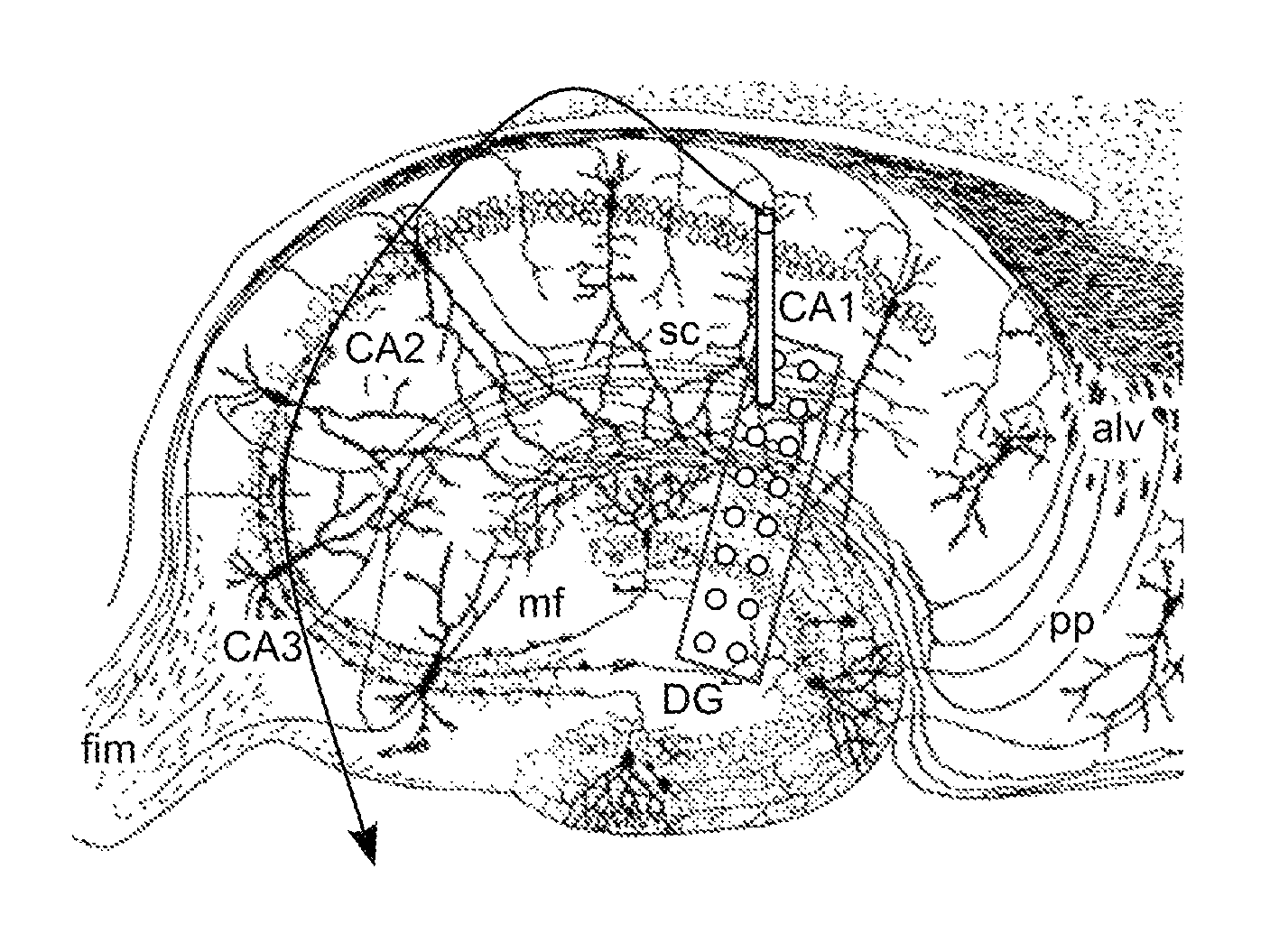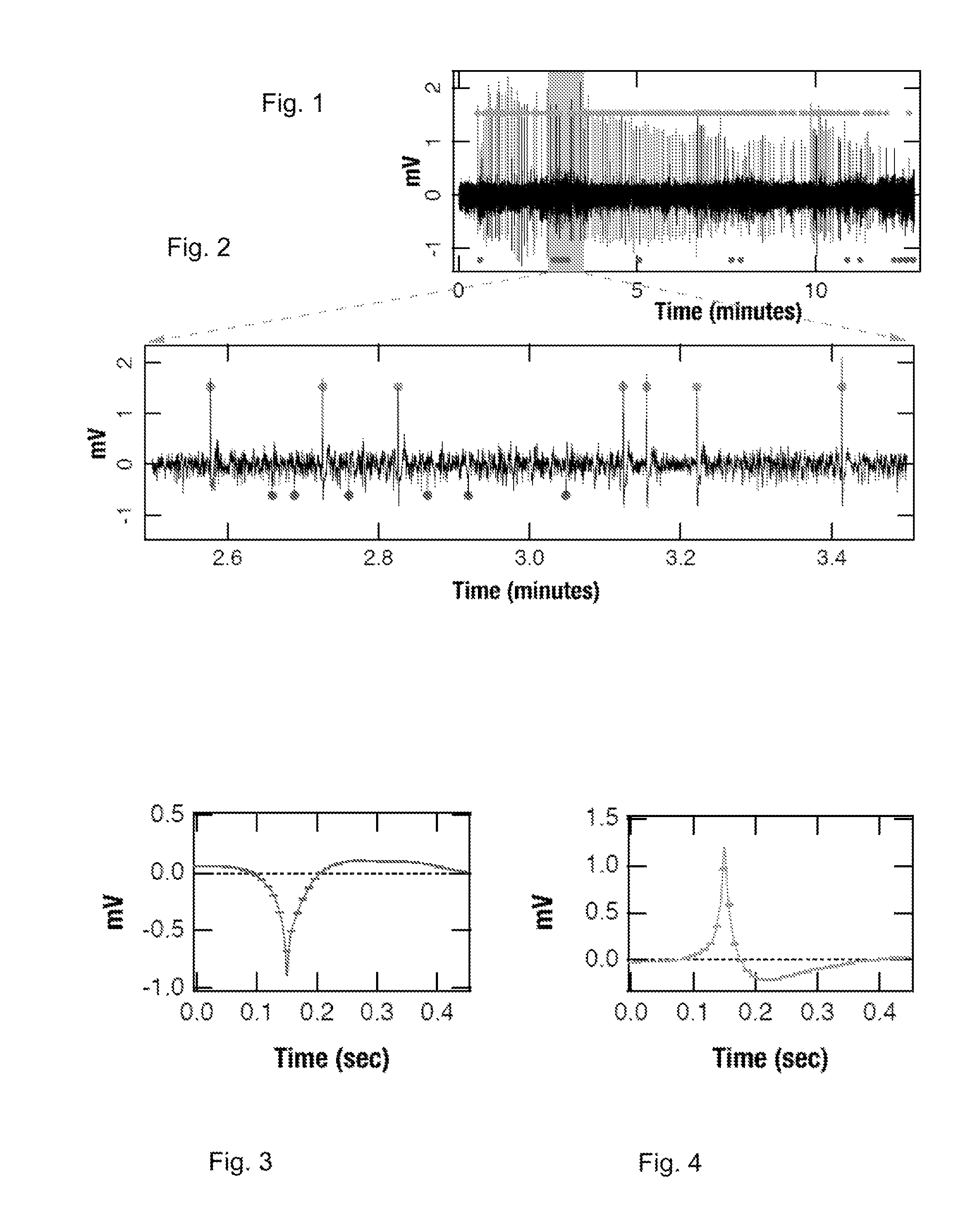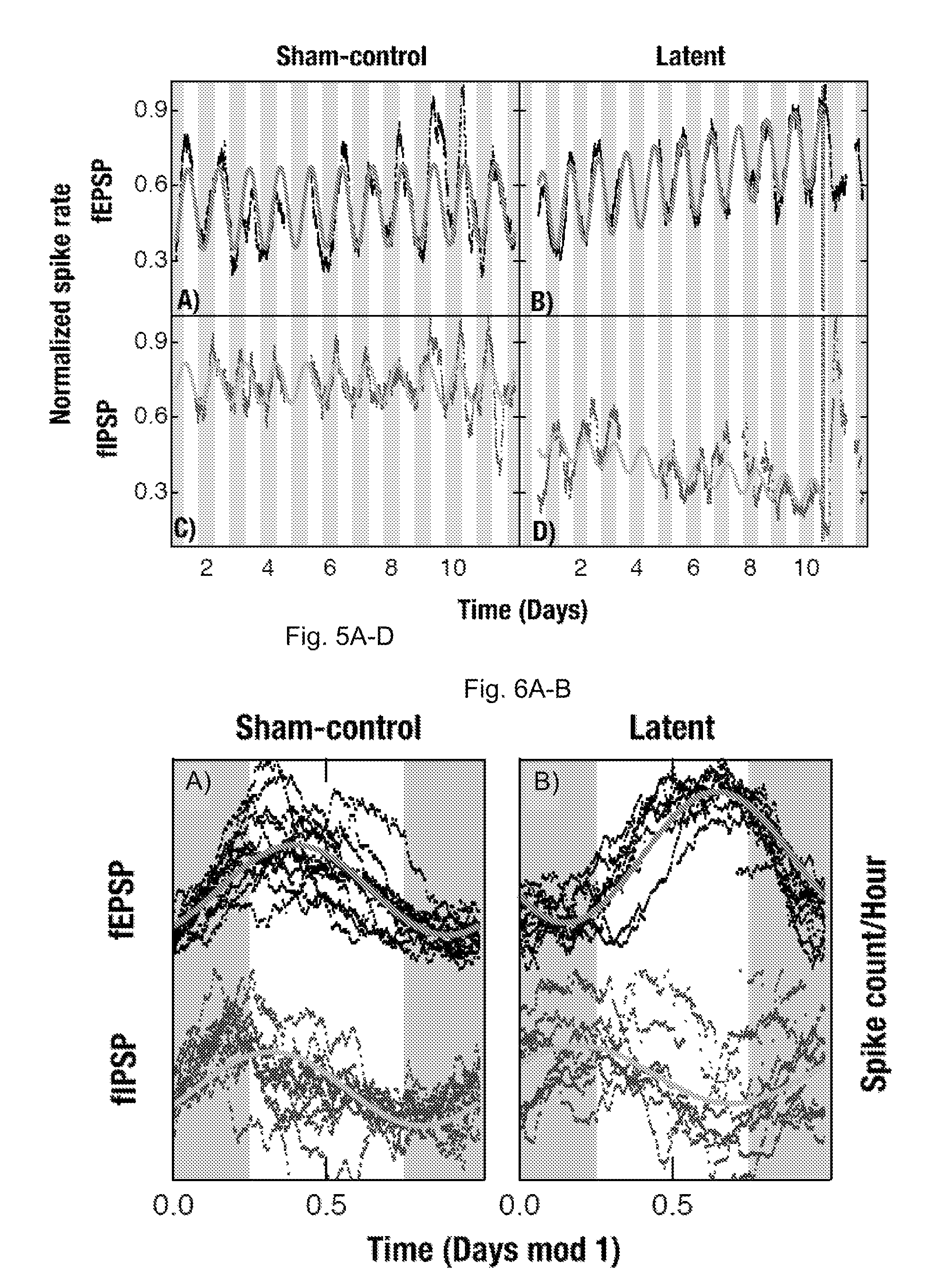Method and system for detecting epileptogenesis
a detection method and epileptogenesis technology, applied in the field of epileptogenesis detection methods and systems, can solve the problems of imbalance during the “latent period, unproved, functional implications, etc., and achieve the effect of easy synchronization
- Summary
- Abstract
- Description
- Claims
- Application Information
AI Technical Summary
Benefits of technology
Problems solved by technology
Method used
Image
Examples
example
[0064]Local field potentials were recorded using a chronically implanted microwires (50 μm polyimide insulated tungsten) in the hippocampal CA1, CA2 and the dentate gyms. Out of a total of five rats, three rats were electrically stimulated into status epilepticus by injecting a bi-phasic current pulse through a bipolar twist stainless-steel electrode implanted in the ventral hippoampus. Continuous EEG / video data were collected at a high sampling rate of 12 KHz. In house software was used to save the recorded data in a 16-bit binary format for later processing. The schematic flow chart of the data analyzed to extract the excitatory and inhibitory field potentials is given in FIGS. 11A-G. All the figures were generated using custom programs within IGOR Pro (WaveMetrics, Inc).
[0065]Method Detail
[0066]The following method may be used for demonstrating biomarkers in accordance with the invention:
[0067]Animal Surgery and Electrode Implantation.
[0068]Experiments were performed on 2-months ...
PUM
 Login to View More
Login to View More Abstract
Description
Claims
Application Information
 Login to View More
Login to View More - R&D
- Intellectual Property
- Life Sciences
- Materials
- Tech Scout
- Unparalleled Data Quality
- Higher Quality Content
- 60% Fewer Hallucinations
Browse by: Latest US Patents, China's latest patents, Technical Efficacy Thesaurus, Application Domain, Technology Topic, Popular Technical Reports.
© 2025 PatSnap. All rights reserved.Legal|Privacy policy|Modern Slavery Act Transparency Statement|Sitemap|About US| Contact US: help@patsnap.com



